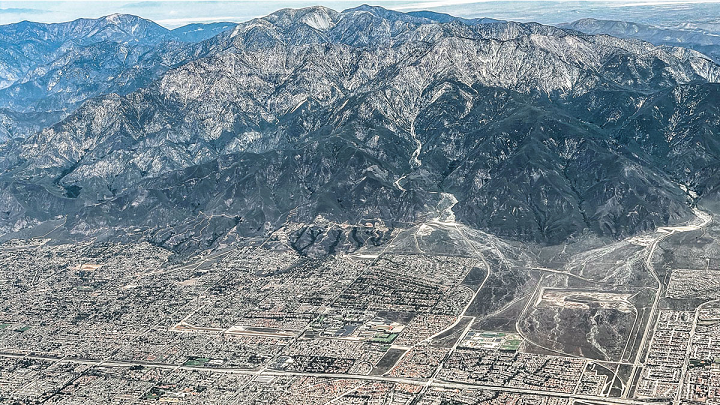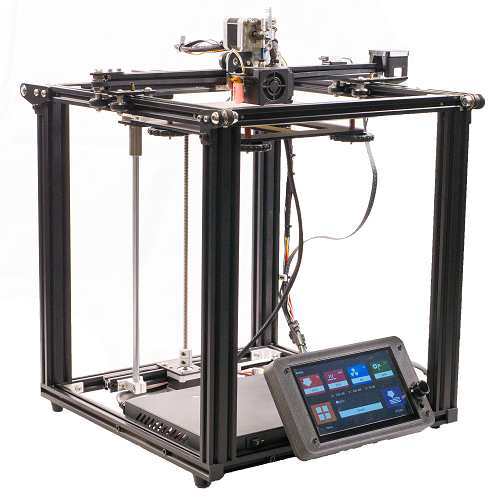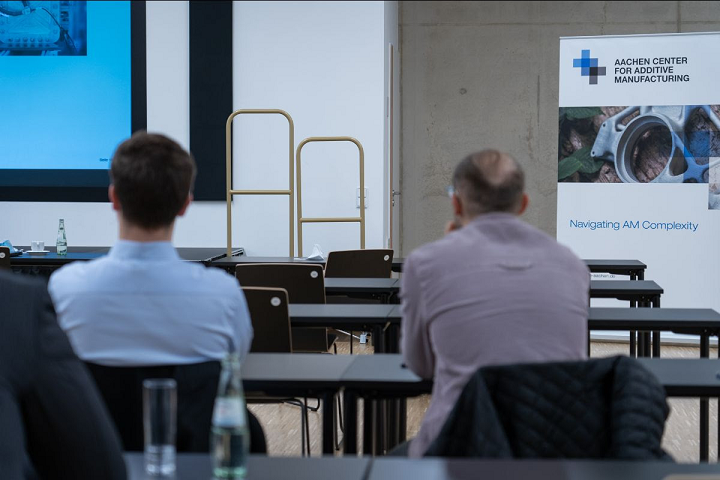We’re kicking off today’s 3D Printing News Briefs with 3D software, as Materialise has integrated Siemens’ Parasolid with its own Magics software. Moving on, The Virtual Foundry launched a metal 3D printer, a bioprinting startup has embedded a disinfection system in its multi-material 3D bioprinting solution, and ENABLE 3D has joined the ACAM community. Finally, researchers are using 3D printing to study water purification and how seismic waves travel through a sedimentary basin.
Materialise Integrates Siemens’ Parasolid Software into Magics
First up, Materialise is adding native CAD workflows in its Magics 26 data and build preparation software by licensing and integrating Siemens’ Parasolid with the solution. With this integration, users can keep iterating CAD designs in Magics and improve their productivity, as well as get more accurate fit-for-purpose data and another helpful toolset in addition to mesh functionality. Parasolid, at the center of Siemens’ Xcelerator portfolio’s open ecosystem, is a premier 3D geometric modeling kernel, and makes it possible to mix mesh data with traditional CAD geometry in a unified environment. So by combining these two software solutions, users of Magics 26, which will be released this spring, can transition easily from CAD design optimization to mesh-based file preparation.
“For years, the 3D printing industry has discussed whether CAD or mesh is the preferred workflow for file preparation. We believe both offer unique benefits and a seamless integration of both formats will provide users with the optimal workflow,” stated Stefaan Motte, Vice President Software for Materialise.
The Virtual Foundry’s Metal 3D Printer
In March of 2021, bound metal 3D printing filament developer The Virtual Foundry launched an all-inclusive desktop metal 3D printing lab, and now it’s released its own metal 3D printer, built and optimized for printing its Filamet materials. Available for $2,495 with a lead time of three weeks and able to print with all of the company’s materials, including Pyrex, bronze, copper, ceramics, Inconel 718, and more, the fused filament fabrication (FFF) system features a 7″ touchscreen, hardened steel nozzle with 0.6 mm diameter, 220 x 220 x 300 mm build area, powder-coated spring steel build plate, Marlin 2.0.x firmware, USB and SD card connectivity, and a one-year warranty with email support. When you purchase The Virtual Foundry Metal 3D Printer, you’ll also receive a spool holder and hub, FilaWarmer, printer tool kit and print removal scraper, extra nozzles, and more.
“Print all your favorite Filamet™ materials with ease with The Virtual Foundry Metal 3D Printer. This FFF/FDM 3D printer is specifically built and optimized by The Virtual Foundry for printing Filamet™. It has a Micro Swiss all metal direct drive extruder and a BL Touch probe for automatic bilinear compensation.”
Brinter Adds Automatic Photon Disinfection System to Bioprinter
3D bioprinting startup Brinter has partnered with LED Tailor to enable multimaterial bioprinting without a cleanroom—by embedding a new automatic photon disinfecting blue light feature in its system. By killing all unwanted forms of bacteria and viruses inside the modular Brinter system, which can print both soft and stiff materials, including complex tissue structures, it’s safer and more portable, and according to Brinter’s CEO Tomi Kalpio, it’s now the world’s first 3D bioprinter using blue light disinfection both inside and outside. Blue light, from 400 nm to roughly 500 nm wavelength, is part of the visible light spectrum, and disinfecting blue light kills all forms of yeast, mold, and bacteria; as opposed to UV light (100–400nm), it doesn’t cause hazardous effects or break materials down.
“Our photon disinfection innovation is an automatic and sustainable solution to microbe problems,” said Harri Rautio, the CEO at LED Tailor.
“The system enables safe bioprinting, production of food and beverages, restrains epidemics, and answers the needs of cleanrooms.
“Our solutions improve safety and vitality of employees and reduce microbiological and chemical risks in healthcare and industrial sites.”
ENABLE 3D Joins The ACAM Community
ENABLE 3D, which develops and markets 3D printable storage and accessory products for tool brands in collaboration with WIESEMANN 1893, has become a member of the Aachen Center for Additive Manufacturing (ACAM) community, based on the RWTH Aachen Campus. Established in 2016, ACAM is meant to facilitate its industry members’ participation in AM-related R&D on the campus, and by joining the community, ENABLE 3D will benefit from this network by having broad access to and becoming involved in ongoing AM research projects. ENABLE 3D customers are involved in the company’s production process for designed storage solutions, which help sustainably digitize the DIY industry, and its ACAM membership will increase its visibility in the AM sector.
“We are excited to be joining forces with ENABLE 3D. The company shows a truly unique way, how additive manufacturing supports a brand strategy,” said Gerret Lukas, Director Projects at ACAM. “Their approach to AM will spark new ideas in our community. Enable 3D’s place within our community will help broaden their possibilities with AM and create new exciting innovation. We are looking forward to walk their path of AM with them.”
3D Printed Membrane Feed Spacers in Water Purification
Researchers from Nanyang Technological University (NTU) and Singapore University of Technology and Design (SUTD) designed and 3D printed membrane feed spacers that can be used to reduce membrane fouling, and generally improve the membrane filtration process performance, in water purification treatments; their work is explained in depth in a recently published paper. Due to the inability to produce complex geometries, conventionally made feed spacers aren’t optimized to control membrane fouling, in which contaminants accumulate on the surface. The research team came up with a new sinusoidal (having the form of a sine curve) design for the spacers, based on CFD studies, featuring perpendicular axial filaments. Using PolyJet technology, they 3D printed conventional mesh spacers and novel sinusoidal ones, which were evaluated for inorganic fouling, channel pressure loss, and more. They found that the 3D printed versions decreased membrane fouling by an additional 10% over the conventionally manufactured ones.
“In this work, we have demonstrated the superior membrane fouling capabilities of the 3D printed sinusoidal spacers compared to the conventional spacer. However, there is still untapped potential for further improvements. Reducing the number of axial filaments or further optimisation to the sinusoidal wave amplitude can help reduce the channel pressure loss of the spacers. This will be an exciting area which can be further explored,” said NTU Associate Professor Chong Tzyy Haur, the principal investigator.
Researchers Study Seismic Waves Using 3D Printed Model of LA

To better understand earthquake hazards in the Los Angeles basin, researchers are turning to 3D printed models. Image courtesy of iStock.com/eyfoto.
Finally, researchers from the University of Chicago, Seoul National University, Korea Advanced Machinery Inc., and Caltech have been studying how high-frequency seismic waves travel through a sedimentary basin—like the kind Los Angeles is located in—by conducting experiments with 3D printed models of the city. These basins start as depressions that are filled in over time with lower-density material deposited by landslides and rivers, and numerical modeling suggests that ground shaking, like from earthquakes, are amplified within basins; obviously, this can lead to a lot of damage. Unfortunately, this kind of modeling can be limited in spatial resolution, which is why the team decided to use sintering AM technology and rigid stainless steel to create 4 x 1 cm models of the 50 km-wide LA basin.
Because 3D printing made it possible to create models with small, natural density variations, it was much easier to study seismic waves. According to University of Chicago seismologist Sunyoung “Sunny” Park, each 3D printed model the team created captures several geological structures, at a scale of 1:250,000, within the basin. The researchers then bombarded the 3D printed models with megahertz-frequency laser light to create tiny earthquakes, and discovered that higher frequencies of ground motion in their models were often selectively reflected back at the edges of the basin, which Park said was “in some sense opposite of our conventional understanding.” The team recently presented their results at AGU’s Fall Meeting 2021.
Subscribe to Our Email Newsletter
Stay up-to-date on all the latest news from the 3D printing industry and receive information and offers from third party vendors.
You May Also Like
New Report: Semiconductor Industry to See $1.4B in 3D Printing Revenues by 2032
“The semiconductor sector has become the most strategically significant area of global industry.” Truer words are hard to come by when it comes to the modern world, and they are...
Will Photonic-Crystal Lasers Revolutionize 3D Printing?
Powder bed fusion (PBF) for metals and polymers predominantly utilizes lasers as the primary heat source. Some directed energy deposition (DED) technologies also employ lasers, while various vat polymerization methods...
3D Printing Unpeeled: Orbex Investment, IndoMIM and HP, Ultrasonic Waves
INDO-MIM has bought three HP Metal Jet S100 printers, operating two in India and one in Texas. This is a win for HP because the company has deep experience in...
3D Printing Webinar and Event Roundup: April 21, 2024
It’s another busy week of webinars and events, starting with Hannover Messe in Germany and continuing with Metalcasting Congress, Chinaplas, TechBlick’s Innovation Festival, and more. Stratasys continues its advanced training...




































